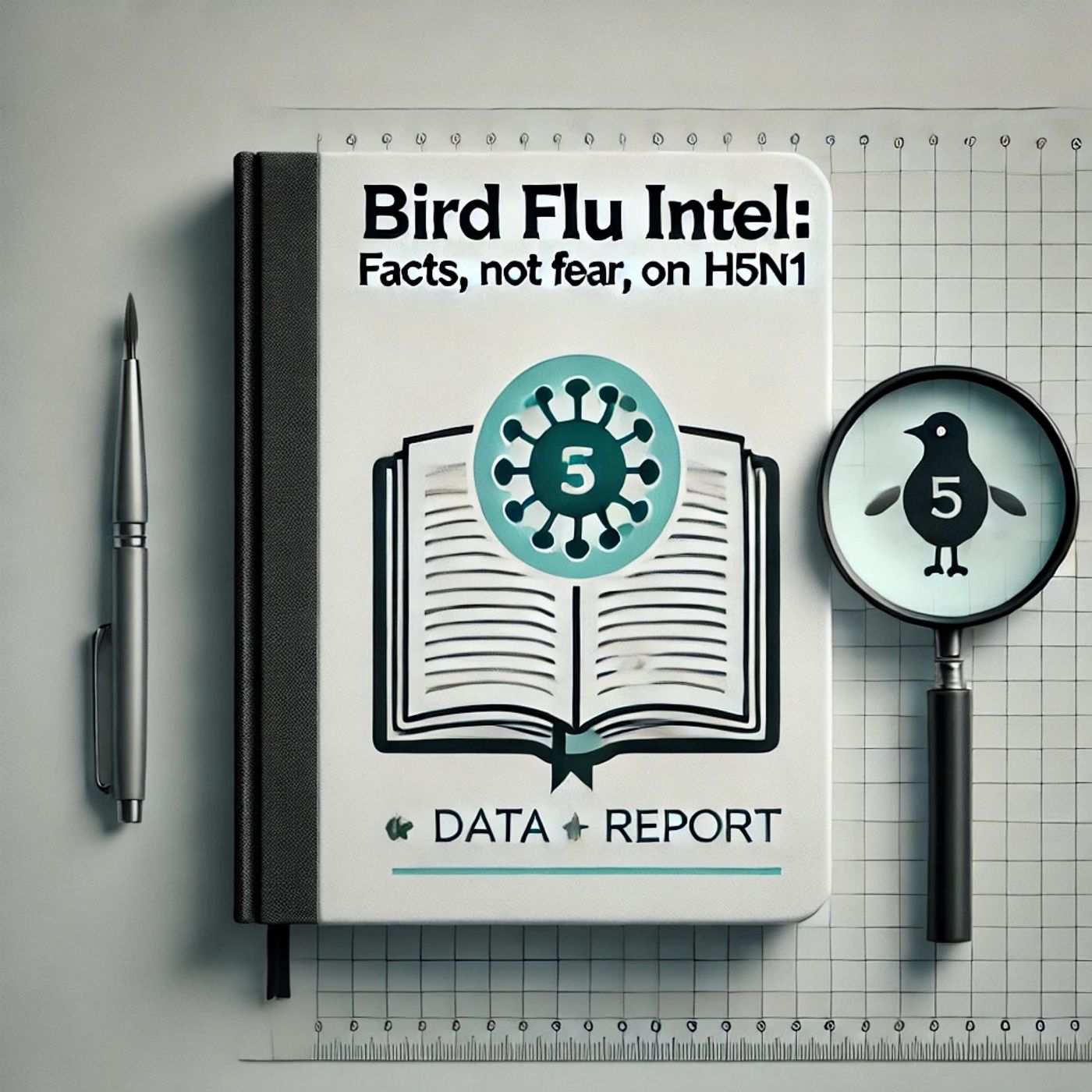Podcast Episode Details
Back to Podcast Episodes
Bird Flu Myths Debunked: Expert Insights on H5N1 Safety, Transmission, and Current Public Health Risk
Welcome to Bird Flu Intel: Facts, Not Fear, on H5N1, a Quiet Please production.
Today, let’s tackle four common myths about H5N1, the bird flu virus, bust them with the latest science, and talk about how to stay clear-headed in the face of misinformation.
Myth one: H5N1 is highly contagious between people right now. Here’s the reality. According to the CDC, as of August 2025, there have been 26 human H5N1 cases worldwide this year, with most cases outside the U.S. and only three cases in the States, all among people with direct, close contact with infected animals. There is no confirmed evidence of sustained person-to-person spread in the U.S. or globally. Almost all cases have occurred after close interaction with sick or dead birds, poultry, or dairy cows, not from casual contact with other people.
Myth two: Eating poultry, eggs, or pasteurized milk can give you bird flu. The Cleveland Clinic, as well as food safety authorities, confirm that avian influenza viruses are destroyed by proper cooking and pasteurization. In the U.S., any poultry flock known to be infected is immediately removed from the food supply, and pasteurized milk is considered safe to drink.
Myth three: The only symptom of bird flu in humans is severe, life-threatening illness. Actually, most recent U.S. cases involved mild symptoms like pink eye or minor respiratory problems. According to the University of Florida’s Emerging Pathogens Institute, eye irritation occurs in over 90 percent of U.S. cases, and all recently infected people recovered. However, severe illness can occur in those with significant exposures, especially with underlying health issues, as seen in rare fatalities.
Myth four: H5N1 is already a pandemic-level threat to humans. The CDC, USDA, and global health agencies agree: while H5N1 is widespread among wild birds and poultry, the public health risk to people remains low. However, flu viruses mutate frequently, so experts are monitoring for changes that could make the virus more transmissible in humans. Pandemic preparedness efforts are underway, including new vaccine research, but there is no evidence H5N1 is spreading easily among humans now.
Why does misinformation stick? In a world of rapid news sharing and social media, sensational headlines spread quickly while fact-based updates lag behind. Misinformation can heighten anxiety, prompt unnecessary fear, and even drive risky behaviors like avoiding safe foods or distrusting public health advice.
How can you tell if something you hear is credible? Some quick tips: Check if the information comes from sources like the CDC, WHO, or your state’s health department, and look for consensus among experts. Beware of claims that rely on single dramatic cases, lack supporting data, or use emotional language. Cross-check headlines before sharing.
Where is there real scientific uncertainty? Researchers are watching closely for any mutations that could make H5N1 more easily transmissible between people, but at this time, that hasn’t happened. Surveillance continues in birds, animals, and people exposed to outbreaks, and new research is helping develop better vaccines and treatments for a changing virus.
Thank you for tuning in. Stay alert, not alarmed, and remember—facts beat fear every time. Join us next week for more Bird Flu Intel. This has been a Quiet Please production. For more, check out Quiet Please Dot A I.
For more http://www.quietplease.ai
Get the best deals https://amzn.to/3ODvOta
Published on 1 week, 3 days ago